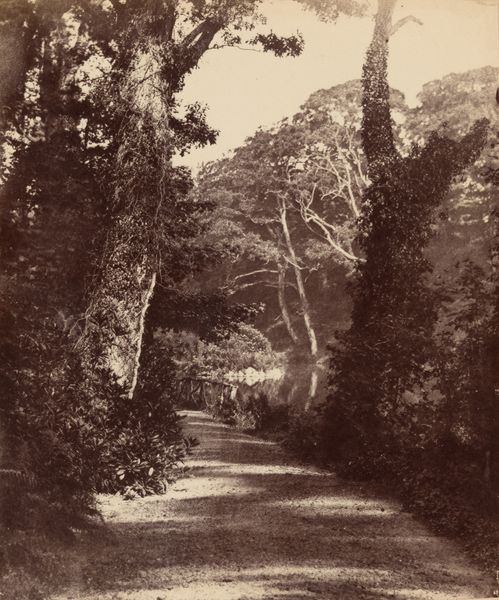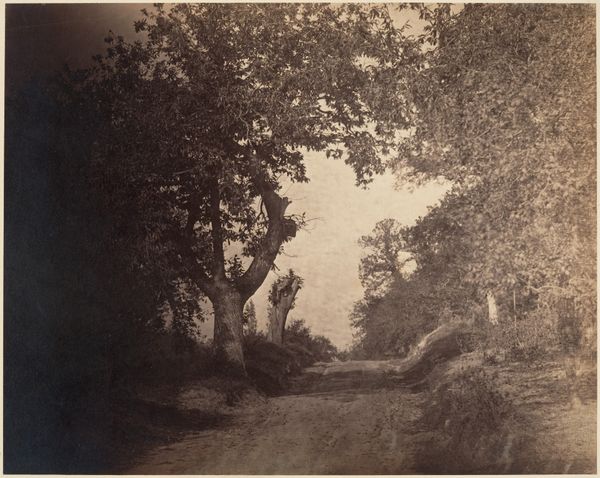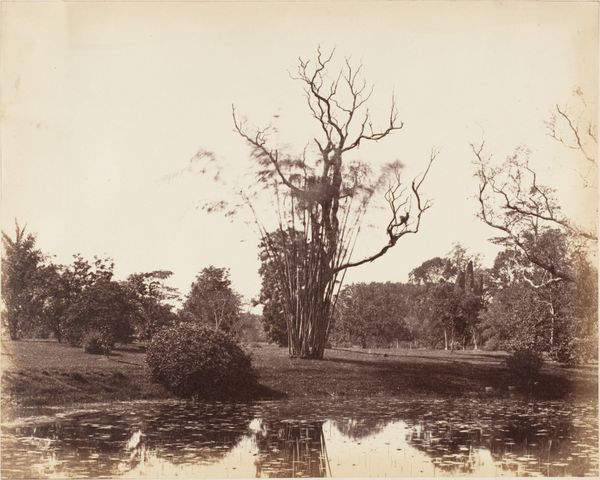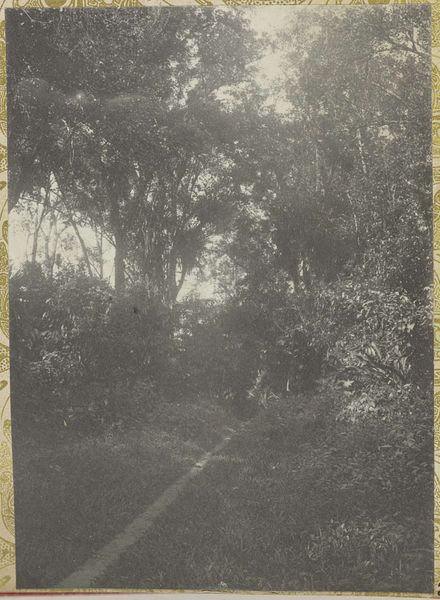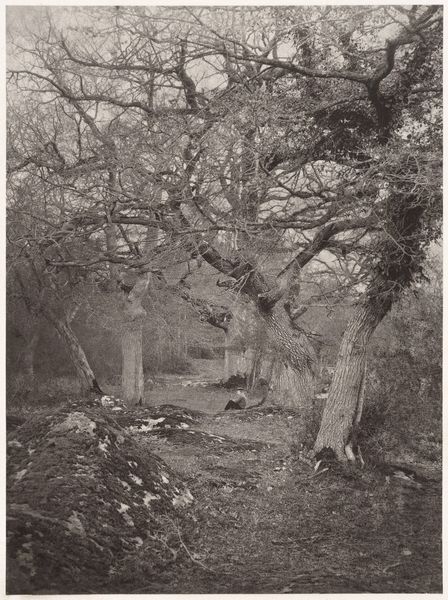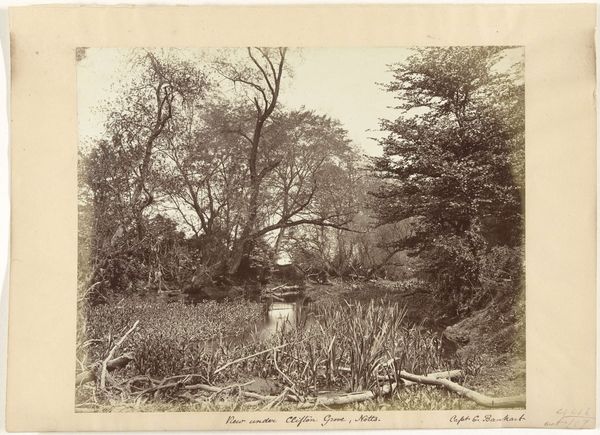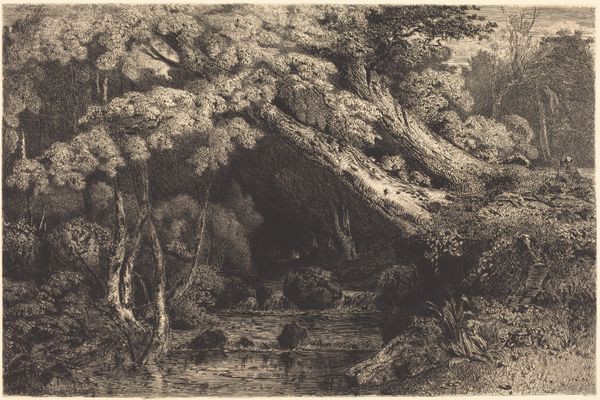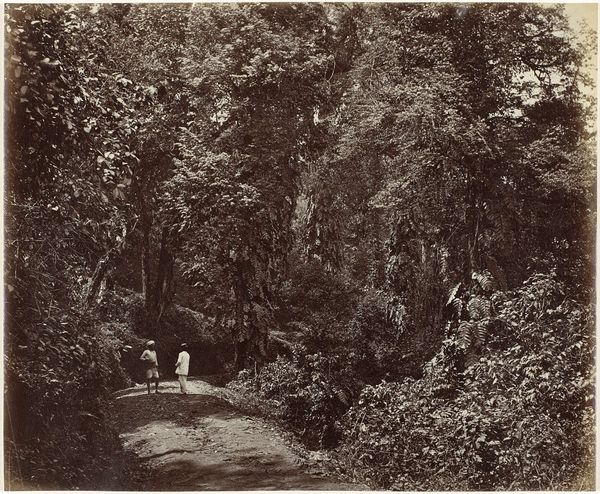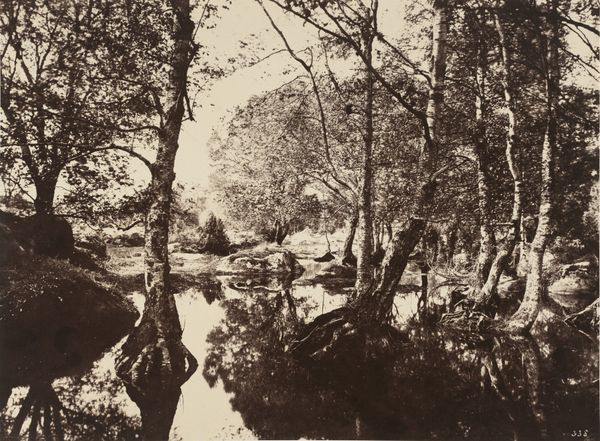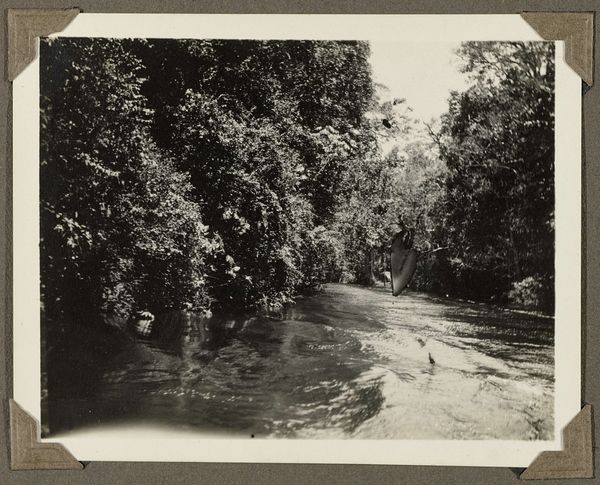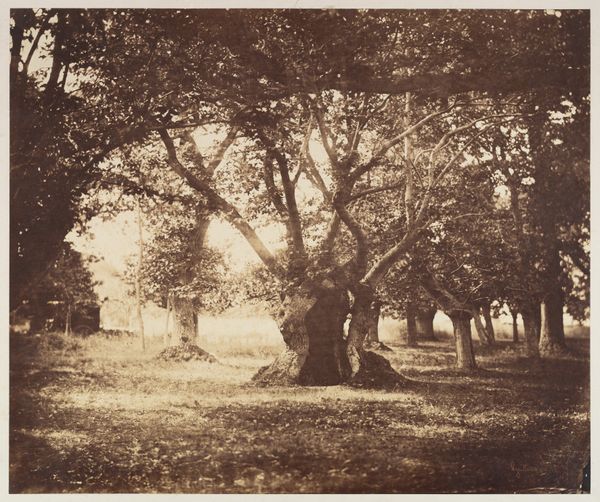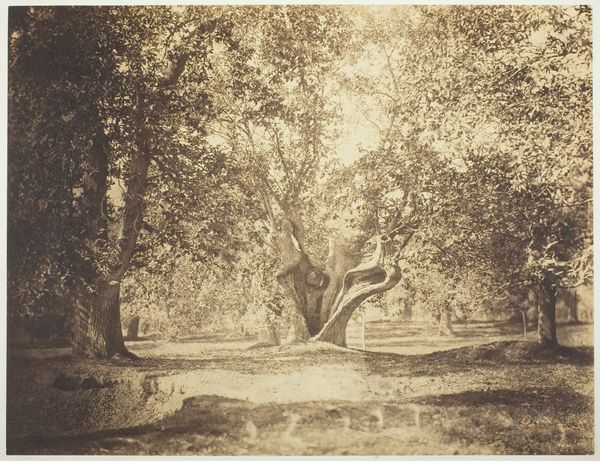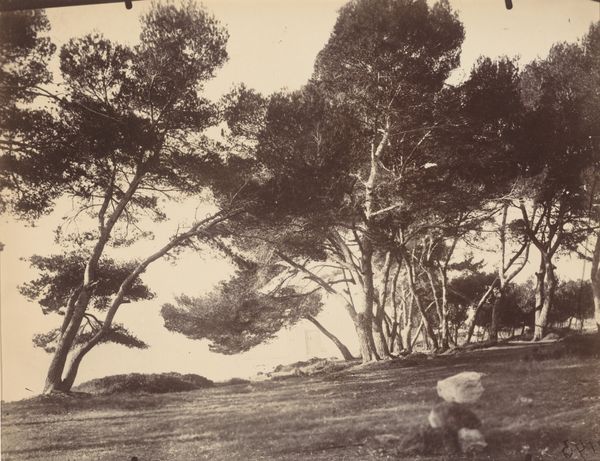
photography, albumen-print
#
landscape
#
photography
#
orientalism
#
albumen-print
Dimensions: Image: 6 7/8 × 9 3/16 in. (17.5 × 23.4 cm)
Copyright: Public Domain
Curator: This albumen print, entitled "Village Road North River," was captured by John Thomson in 1869. The image now resides here at The Met. Editor: Immediately, I’m struck by the tonality – sepia leaning toward silver, giving a diffused almost dreamlike quality. It's beautifully balanced. Curator: Thomson was one of the first photographers to document life in China and Southeast Asia for a Western audience. What intrigues me is the socio-economic aspect of how photographic expeditions like his often exoticized and reinforced colonial power dynamics. The albumen process itself, involving egg whites, points to very specific material conditions. Editor: Yes, but focus on the forms: the massive tree that dominates the right of the composition versus the still pond mirroring the sky, creates this interesting juxtaposition between the static and the ethereal. The strong horizontals ground the whole composition. It's visually captivating, regardless of context. Curator: And yet, that context cannot be ignored. Consider how this "village road" is being presented, framed. Is it a romantic vision of rural life, or an idealized portrayal masking more complex realities of labor and exploitation? The albumen print medium, in its commercialization, also becomes a commodity within a growing colonial marketplace. Editor: I agree that such details are interesting points. But looking solely at it, the visual construction itself tells us about its essence: see the lone figure on the road, adding depth and human scale. Its inclusion directs the gaze and creates a journey. Curator: Thomson’s technique undoubtedly helped shape a particular vision of China. The material reality of producing these images—the travel, the darkroom labor, the resources—are often obscured by the photograph’s aesthetic appeal. Editor: A valid and important reminder, definitely! It has, indeed, broadened my perspective on Thomson's piece and opened doors to many different angles of investigation. Curator: It makes you think, doesn't it? And that’s the mark of impactful work, no matter its origin.
Comments
No comments
Be the first to comment and join the conversation on the ultimate creative platform.
